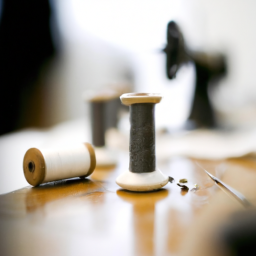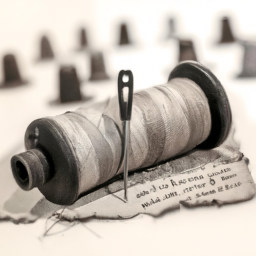
History of Satin Stitch

Example of Satin Stitch
Satin stitch is a decorative technique used in embroidery and needlework to create a smooth and glossy surface. It is a classic and versatile stitch popular in various types of embroidery, including crewel, cross-stitch, and freestyle embroidery.
The origins of satin stitch can be traced back to ancient China, where it was used in silk embroidery. Chinese artisans developed this technique to create delicate and intricate designs on silk fabrics, especially in their traditional silk tapestries, clothing, and decorative items. The smooth and lustrous finish of satin stitch added elegance to their creations.
From China, satin stitch spread to other parts of Asia, including Japan and India, where it became an integral part of their respective embroidery traditions. Japanese embroidery, known as nuido, utilizes satin stitch to create detailed floral motifs and scenes. In India, satin stitch is used in traditional embroidery styles like chikankari and kantha, where it is combined with other stitches to create beautiful patterns.
During the Medieval period, satin stitch gained popularity in Europe. It was often used to embellish ecclesiastical vestments, such as altar cloths and chasubles, with vibrant silk threads. As trade routes expanded and the availability of silk and embroidery materials increased, satin stitch became more accessible to artisans and embroiderers throughout Europe.
In the Renaissance era, satin stitch reached its pinnacle of popularity. It was commonly used to create intricate designs on garments, upholstery, and household textiles. The richness and precision of satin stitch made it a favorite among the nobility and upper-class individuals who sought to display their wealth and status through lavish embroidery.
During the 19th century, satin stitch continued to evolve and adapt to changing artistic styles and embroidery techniques. With the rise of the Arts and Crafts movement, embroidery began to focus more on the handmade and the revival of traditional techniques. Satin stitch became a popular choice for creating realistic and detailed floral motifs in naturalistic designs, as seen in the works of renowned artists such as William Morris and the embroiderer May Morris.
Today, satin stitch remains a beloved embroidery technique, cherished by artisans, crafters, and enthusiasts worldwide. It can be used to create a variety of effects, including smooth surfaces, shading, and texture. Whether used to create traditional or contemporary designs, satin stitch continues to captivate us with its beauty and versatility, linking us to a rich history of craftsmanship and creativity.





Very informative!
Tayla Bain: So cool!
This is a fascinating look into the history of satin stitch – from its origin in China to how it’s used in modern craft. It’s incredible to think of how one simple stitch has been around for so many centuries!